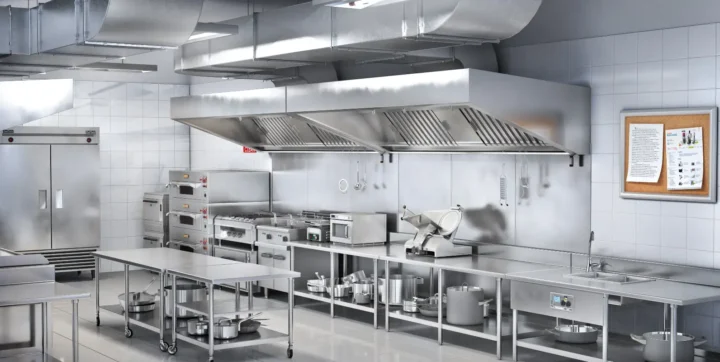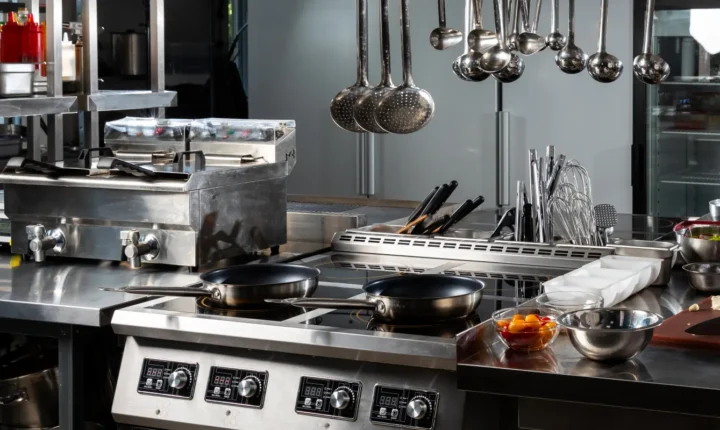How to Handle Emergency Restaurant Equipment Repair
Unexpected equipment failure in a restaurant can disrupt operations, frustrate staff, and disappoint customers. It often strikes without warning, creating pressure to act fast while still keeping service moving.
The financial impact of unplanned downtime adds up quickly, especially during peak hours. Even a brief disruption can damage your reputation and shake customer confidence.
Panic and guesswork rarely lead to effective solutions in these moments. What you need is a clear, organized response tailored to high-stress kitchen environments.
Read on to learn how to handle emergency restaurant equipment repair with speed, clarity, and control.

Contact a Reliable Repair Service Immediately
When essential equipment goes down, waiting too long to call for help only makes things worse. The longer you delay, the more service and revenue you risk losing. It’s smart to work with a company that provides restaurant equipment repair and understands the pace and pressure of commercial kitchens.
The following are three key actions to take right away to speed up the repair process and avoid unnecessary downtime:
- Use trusted contacts for emergency service: Keep a short list of local providers who handle emergency restaurant equipment repair. Make sure they specialize in commercial kitchen equipment, not just general appliances. A reliable contact means less time scrambling during a breakdown.
- Ask the right questions before they arrive: Confirm whether the technician is familiar with your brand and if they carry the necessary parts. If you’re dealing with commercial refrigerator repair or a failed fryer, time is critical—having a tech who’s already equipped for the job can mean a same-day fix.
- Give clear, specific information about the problem: Tell them exactly what’s wrong, when it started, and how it’s affecting your kitchen. This helps experienced technicians bring the right tools and parts, improving the chances of a quick resolution.
A solid repair contact list and clear communication give you an edge when things break down—keeping your kitchen moving when it matters most.
Assess The Situation Quickly
When a piece of commercial kitchen equipment fails, your response in the first few minutes can influence how long you’re out of service. The goal isn’t just to react but to understand the issue fast enough to guide your next move effectively.
Below are three essential steps to help you assess the situation with clarity and speed:
- Identify the failed equipment and its role in operations: Determine exactly which unit broke down—whether it’s your refrigeration equipment, fryer, or steam table—and understand what function it supports in your kitchen flow. Knowing how central it is to your service will help you prioritize the response.
- Evaluate how it impacts food safety and service continuity: If a piece of equipment affects cooking temperatures or safe food storage, the issue is critical. For example, a faulty walk-in cooler poses a more immediate concern than a backup prep table. Use this judgment to decide if you need emergency restaurant equipment repair right away.
- Decide whether to shut down or continue in a limited capacity: Some failures require a full stop, while others allow you to stay partially open. Make that call early and involve your key staff so they can help adjust operations. If you’re unsure, consult a provider that specializes in restaurant equipment repair to guide your next step.
Fast, informed decisions at this stage keep problems from escalating and help you recover quicker.

Document the Incident and Schedule Preventive Maintenance
Once the repair is complete, it’s essential to document the incident thoroughly. As a restaurant owner, keeping detailed records of the problem, the repair performed, and the associated costs helps you track equipment performance over time. This information serves as a reference for future maintenance decisions and budgeting.
Next, it’s important to evaluate whether this issue could have been avoided with preventive measures. Review your maintenance schedules to determine if regular servicing or part replacements were missed or delayed. Preventive maintenance can significantly reduce the chances of unexpected failures and costly repairs in the future.
Finally, take this opportunity to update your emergency response procedures. If this incident exposed any weaknesses in your protocols, now is the time to make necessary adjustments. Having a refined plan in place ensures that your team can react swiftly and effectively should another issue arise.
Implement Temporary Solutions to Stay Operational
A supportive kitchen crew can change how your team handles emergencies. When one piece of essential equipment breaks down, team members who trust each other are quicker to adapt, communicate, and fill gaps. This cooperation creates a strong base that helps keep service running, even when the situation gets tough.
In many commercial kitchens, the way staff communicate during a breakdown often reflects the day-to-day culture already in place. A team that routinely shares responsibilities and respects each other’s roles is more likely to troubleshoot problems effectively. This kind of teamwork reduces stress and speeds up decisions, making delays less noticeable to customers.
Equally important, an open and communicative environment encourages staff to speak up early about problems they notice with commercial foodservice equipment. Whether it’s a change in how the steam table holds heat or irregular cycling in refrigeration equipment, small warnings caught early can prevent bigger disruptions. That proactive mindset is often fueled by strong internal relationships and daily collaboration.
Final Thoughts
Handling equipment failure in a restaurant requires more than quick fixes—it demands clear thinking, coordination, and preparation. A fast, organized response limits disruption, but it’s the systems you build in advance that truly determine how well your team copes.
From choosing the right service partners to encouraging proactive communication, each decision strengthens your ability to respond under pressure. Emergencies will happen, but with the right habits and protocols in place, they don’t have to derail your service or your reputation.


